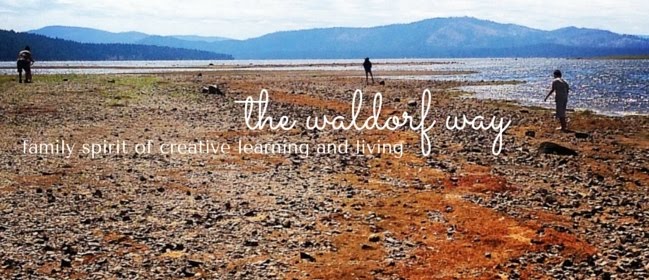As if it wasn't enough that I am in the middle of my foundation studies in the intense five week Summer Teacher Education program at Rudolf Steiner College, I am also in a study group discussing the fundamental points of Philosophy of Freedom. My thirst for knowledge clearly outweighs my desire for sleep!
In the second chapter titled The Fundamental Desire for Knowledge, Rudolf Steiner poses that we "seem born to be dissatisfied." He quotes from Goethe's Faust:
Two souls reside, alas, within my breast,
And each one from the other would be parted.
The one holds fast, in sturdy lust for love,
With clutching organs clinging to the world;
The other strongly rises from the gloom
To lofty fields of ancient heritage.
Steiner agrees that within man resides a natural human characteristic: our thirst for knowledge. From this universal quest arises the distinction of I and World. (In a previous blog, Clash of Spirits, I posed that the thirst for knowledge does not necessarily have the same quality among cultures, resulting in the fall of the native american culture.)
Our awareness that we are separate from the World, yet are united with the World, creates the "spiritual striving of mankind." (Steiner, POF) We continually seek to understand our place in the universe. During Steiner's time, two prevailing theories existed, of which both were inadequate to fully elucidate the relationship of the I and the World.
The two theories are dualism and monism. Monism is further subdivided into materialism, spiritualism, and - this is just my term for it - atomism.
Dualism acknowledges that the I and the World exist as two entities, but does not reconcile the connection between the two. For dualists, the I exists purely in the spiritual realm, and the human body and the world are of the physical realm, of matter, of the senses.
Monism is concerned only with the unity of the I and the World. Materialistic monism swings heavily towards physical processes as explaining the origin of thoughts, that the phenomenon of thinking really is the result only of the brain, rooted firmly in matter. Spiritual monism is on the other side of the coin, that we are a product only of the spirit world. The third version takes the atom and within it resides the unity of the physical and the spiritual worlds. According to Steiner, all are inadequate in giving us a more accurate working framework with which we can study our Selves and our place in the World.
In this second chapter of Philosophy of Freedom, Steiner does not reveal the answers, he merely presents us with the positions of his contemporaries, and examines the inadequacies.
Through my first two weeks of studying Steiner and theosophy, I believe Steiner reconciles the duality of the human condition through his delineation of the soul aspects of the human being. Basically, at the intersection of the physical world and the spiritual world, the human being's I, or Ego, resides, taking on the qualities of both the physical realm - the senses, and the spiritual realm - the origin of thoughts and intuition. The sentient soul, the intellectual soul, and the consciousness soul work in concert to maintain the separation of the I from the World, yet allows for the transformative processes of the human will in striving for unity with the World.
In another previous blog post, Thought Exercise, I gave a reflective exercise drawn from my theosophy class that takes one through the process of honing the soul's spiritual striving. The sentient soul receives the image as feelings, the intellectual soul as thinking, and the consciousness soul as meaning and willing.
The thirst for knowledge, ultimately, is quenched with meaningful action.



1 comment:
Can I post some of this on The Philosophy of Freedom website?
Post a Comment